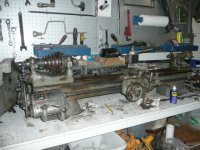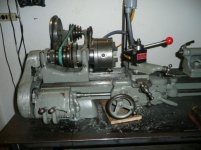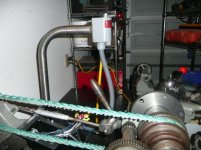robert102653
Aluminum
- Joined
- Apr 21, 2015
- Location
- wilmington nc
Ok so here itis the end of the restoration journey in that today i made chips with the lathe i have been restoring for the last four months. With two full time jobs it has not been easy to find time to play but hell if i wasn't determined to get to this point. My son says that cold coffee is a sure sign of "shit getting done" Well i have left a lot of half full cups of coffee laying about the house. I told all of you that the next pics i posted would be of the south bend model 9a lathe covered in chips so here you go.
The before photo


The after photos


Now I just need to learn how to use it to the fullest. Wish me luck LOL.
I'll be back and looking to pick brains.
Rob
The before photo



The after photos



Now I just need to learn how to use it to the fullest. Wish me luck LOL.
I'll be back and looking to pick brains.
Rob




 im going to use it
im going to use it